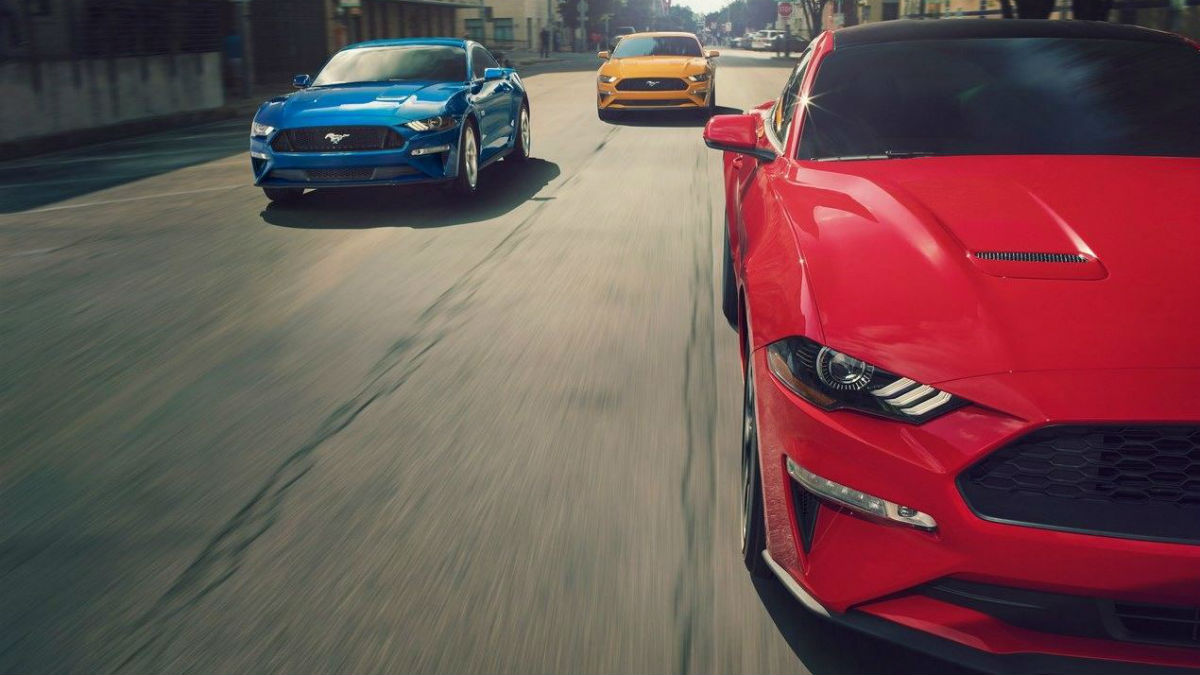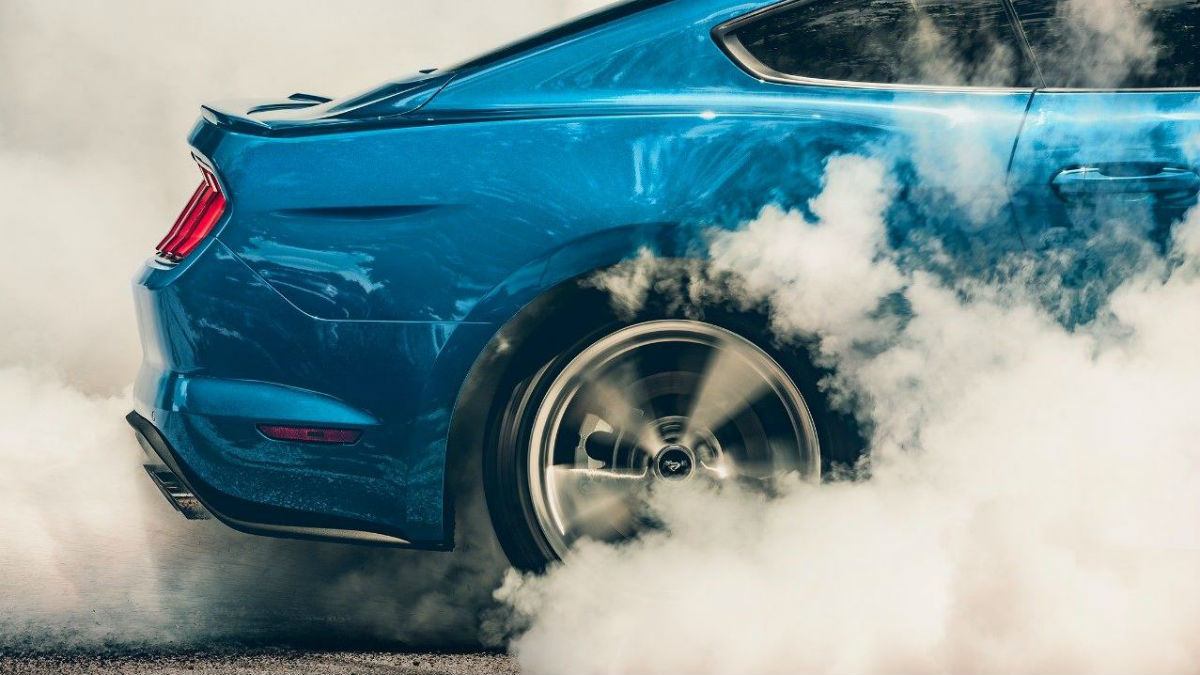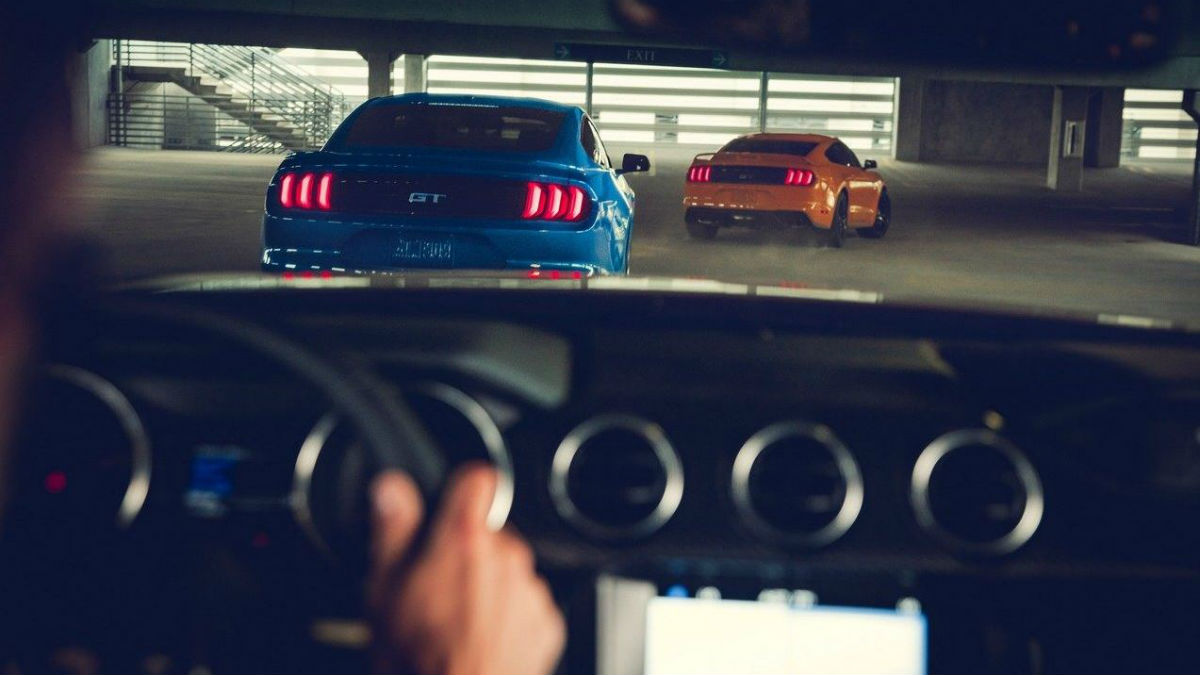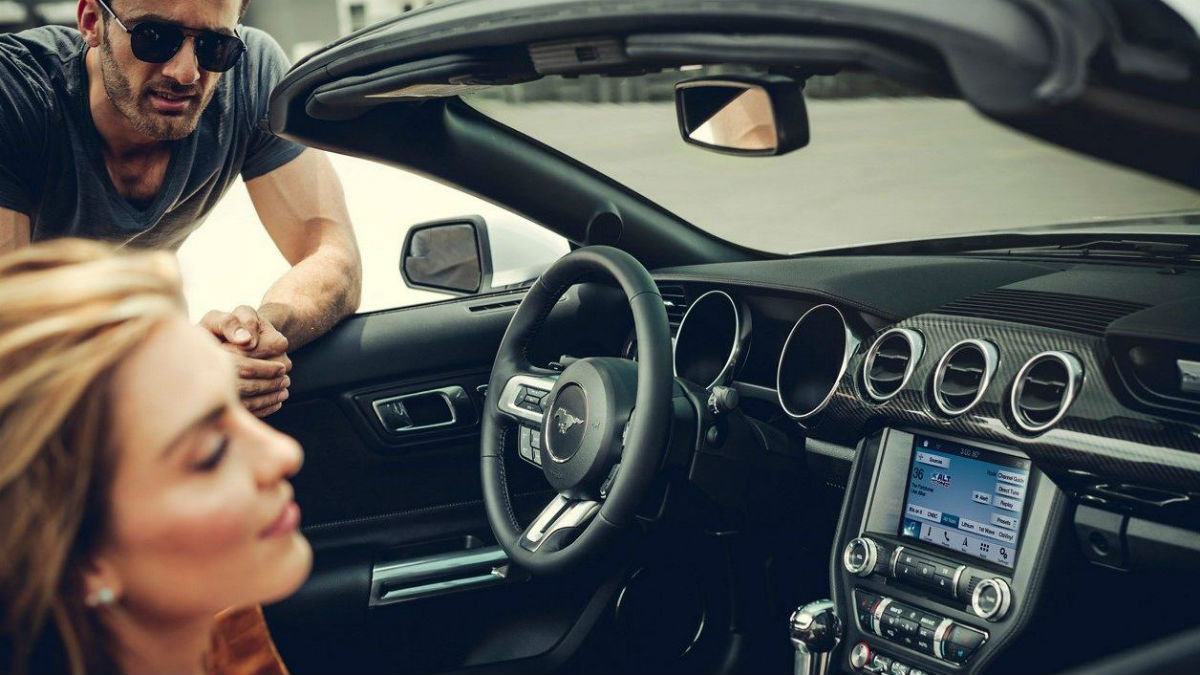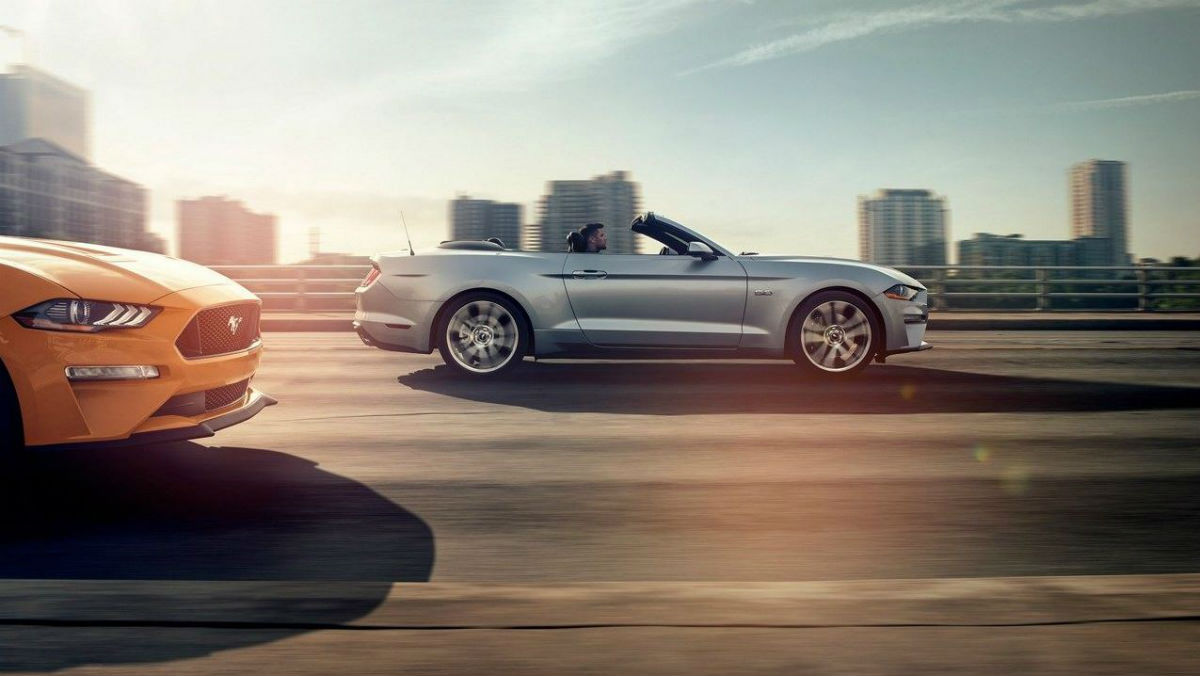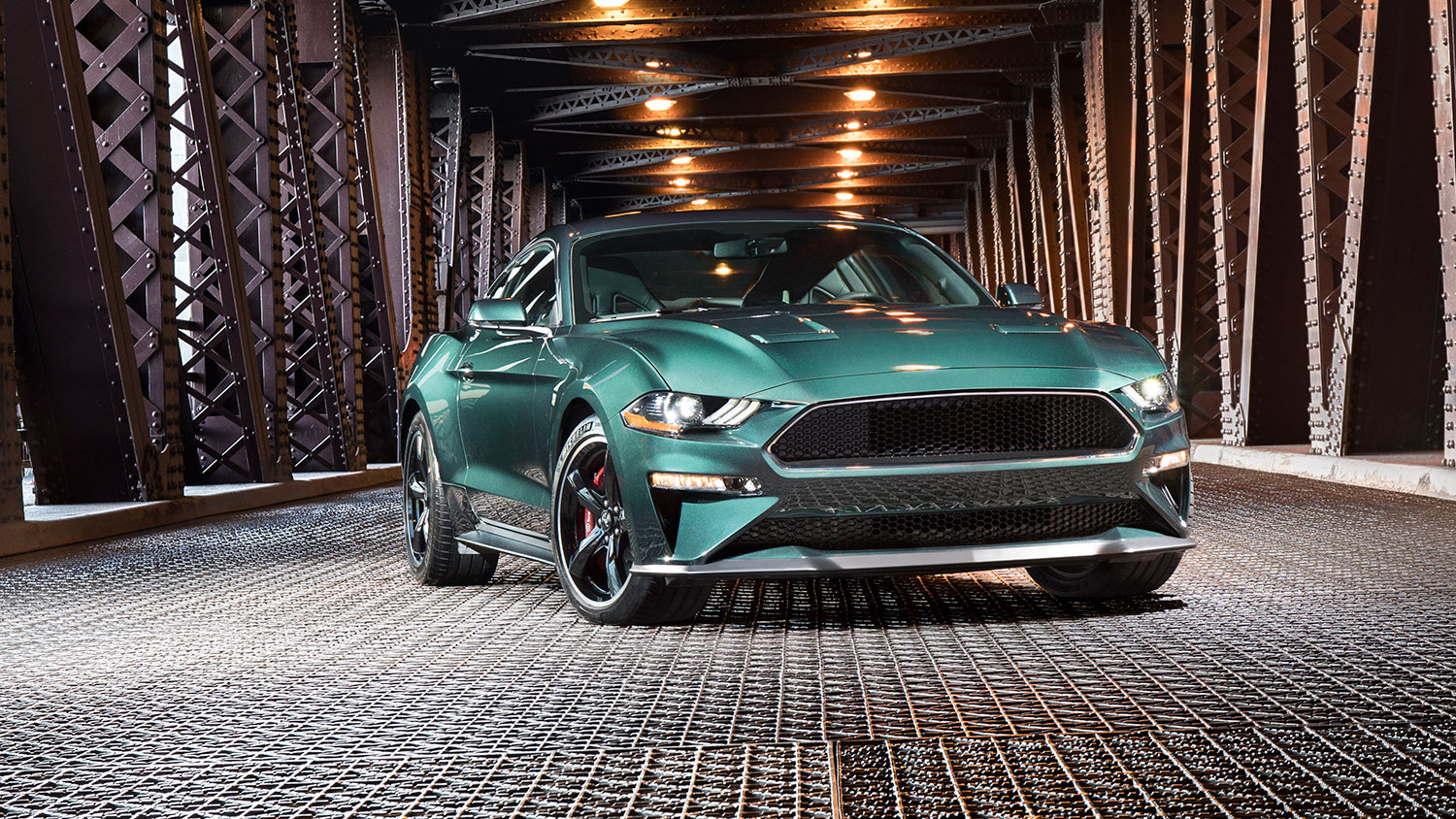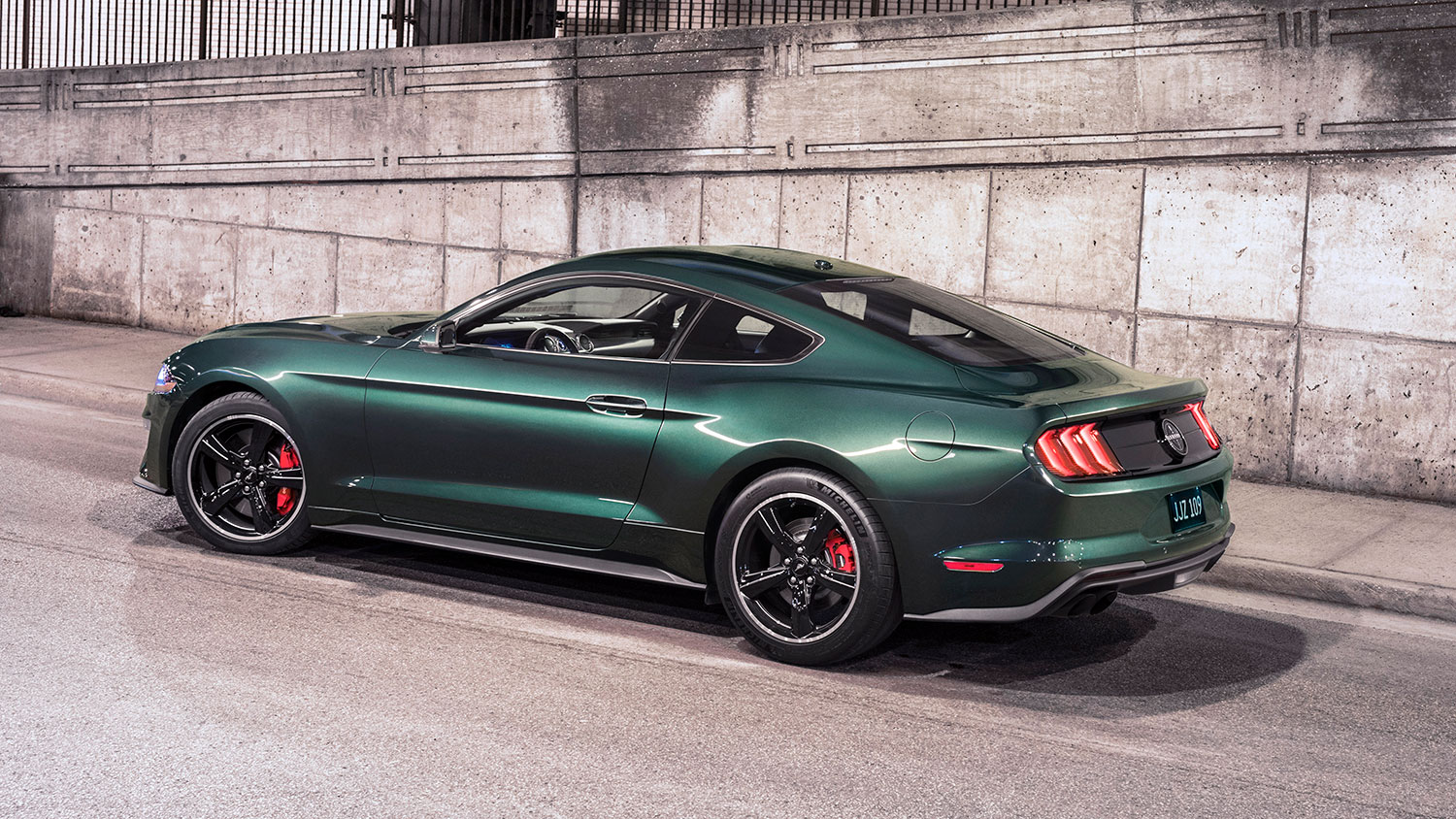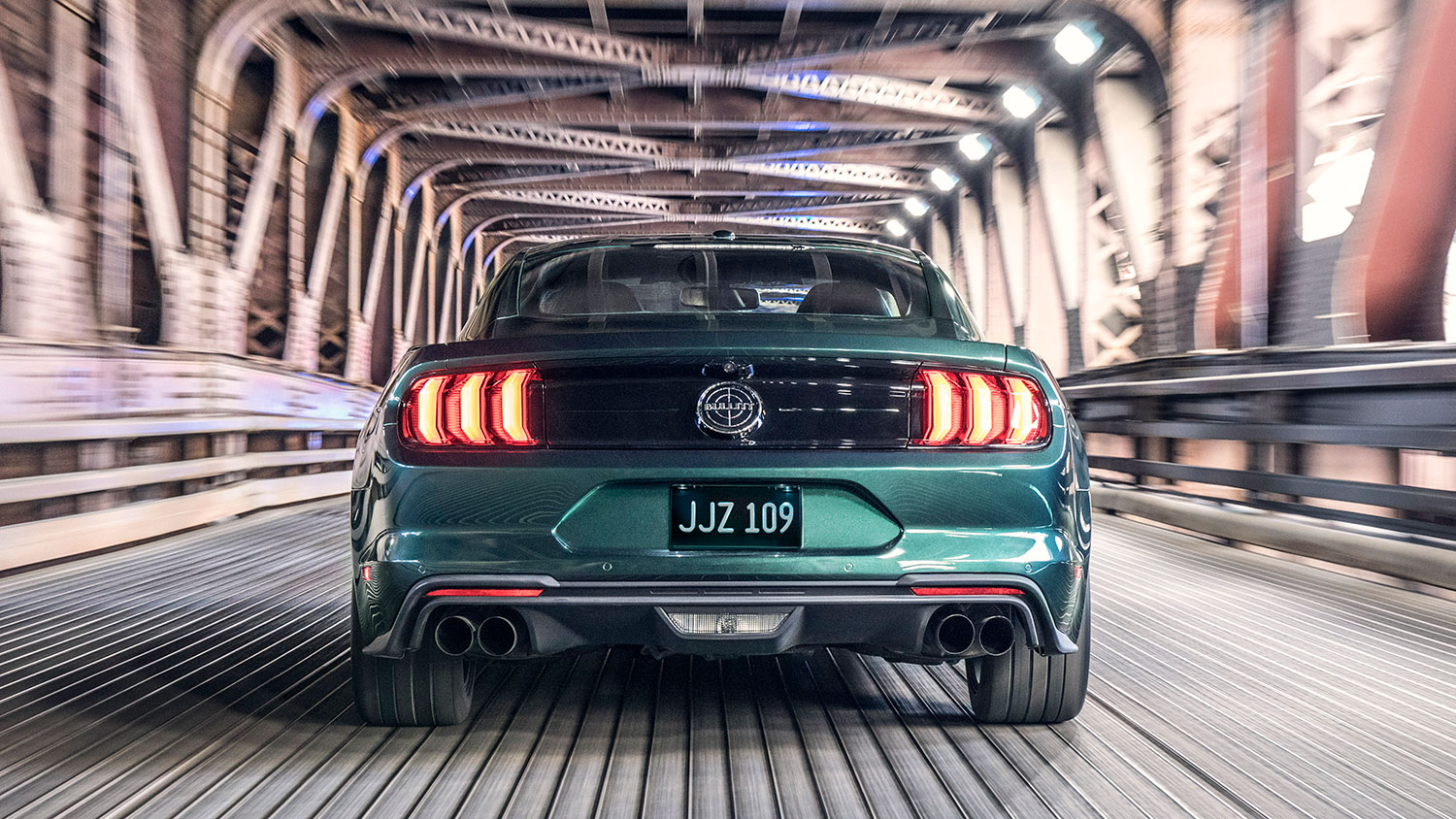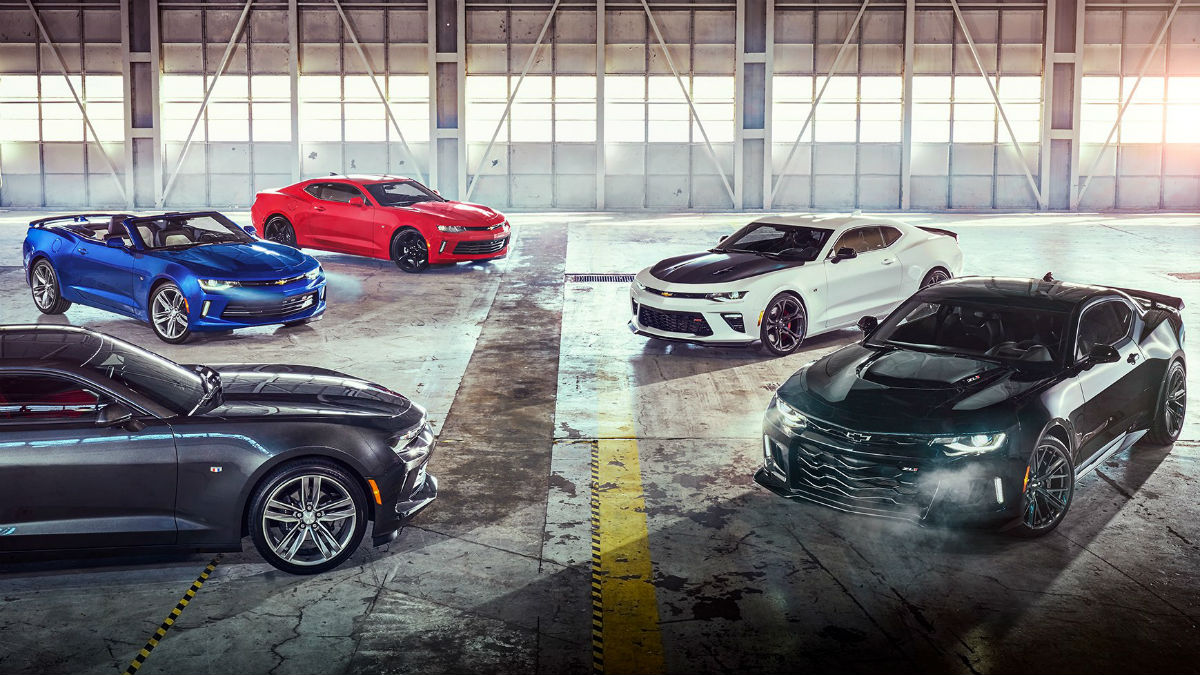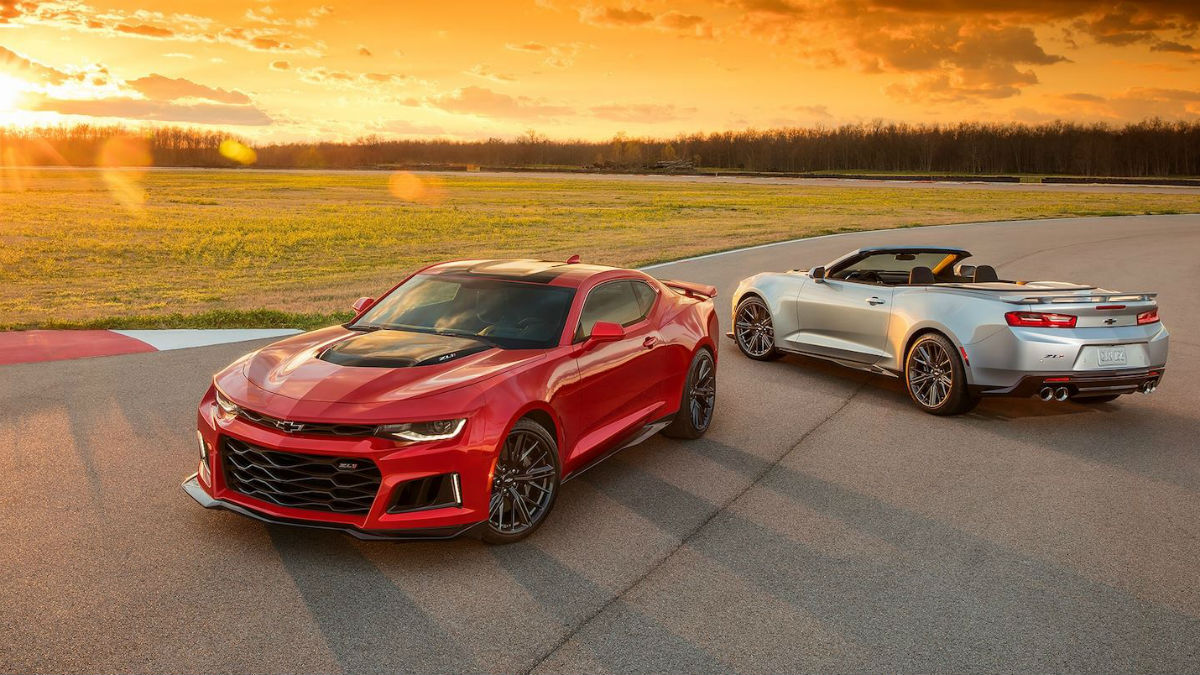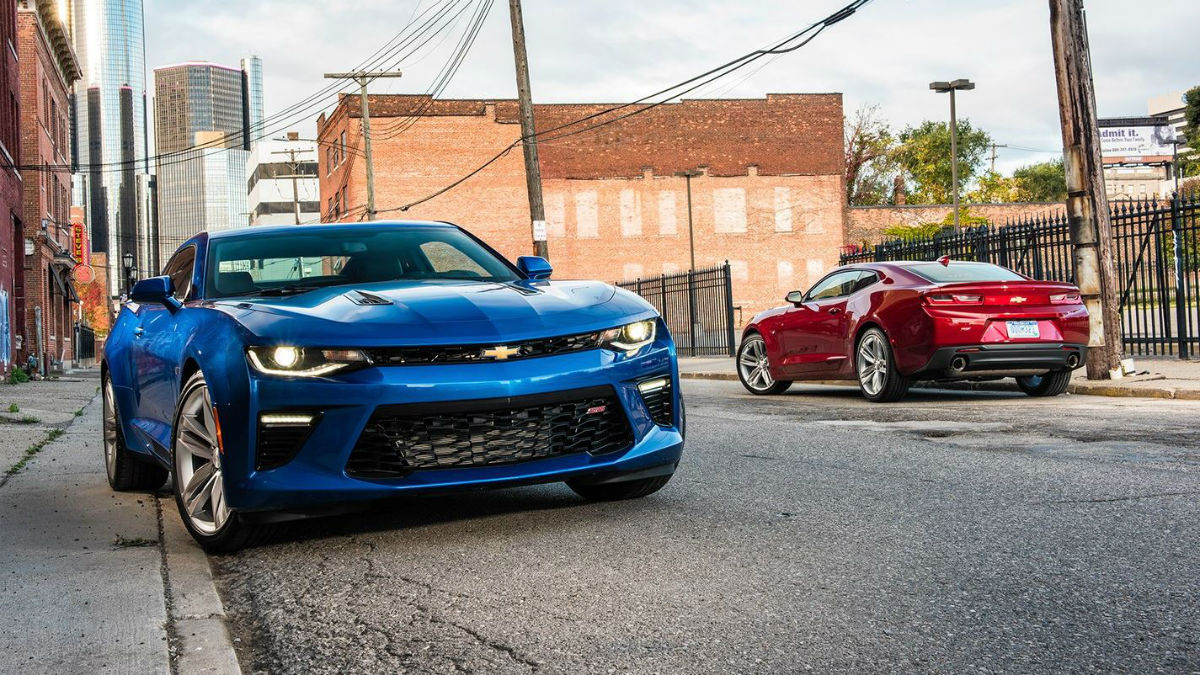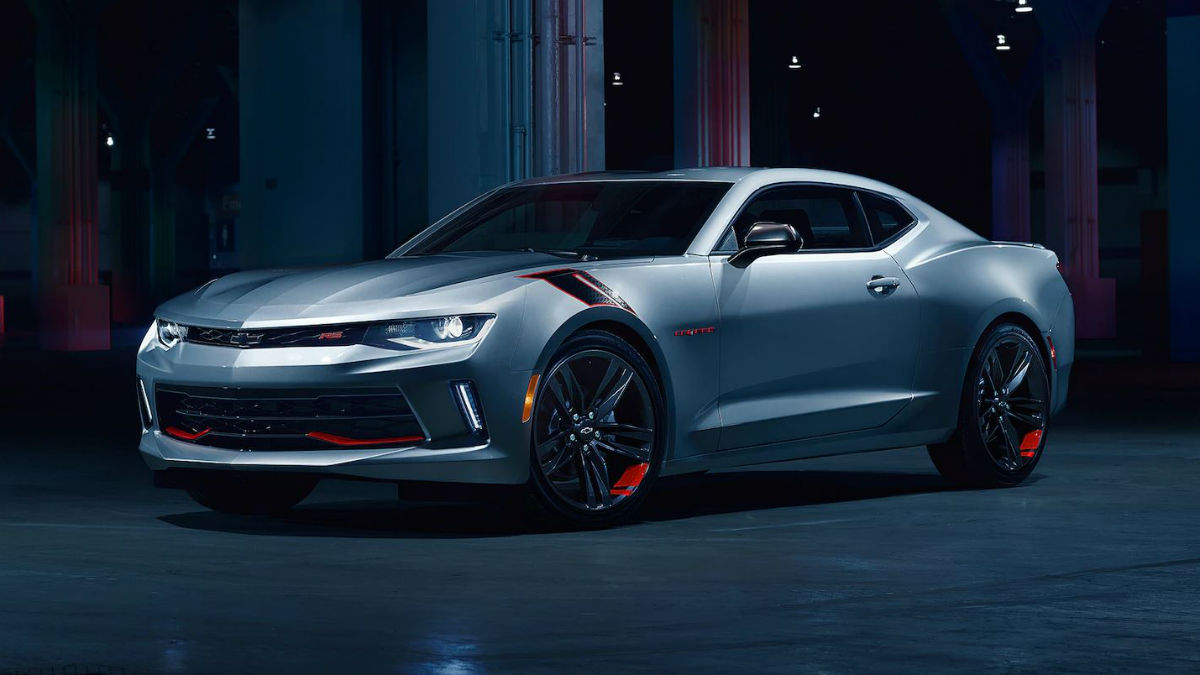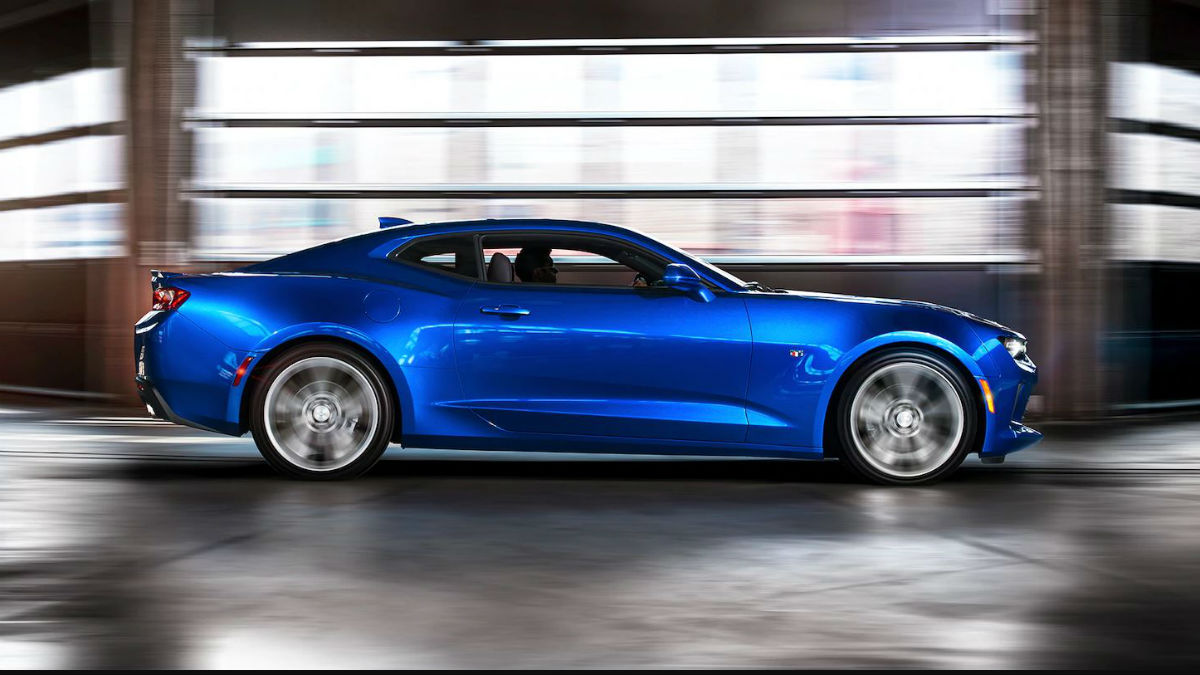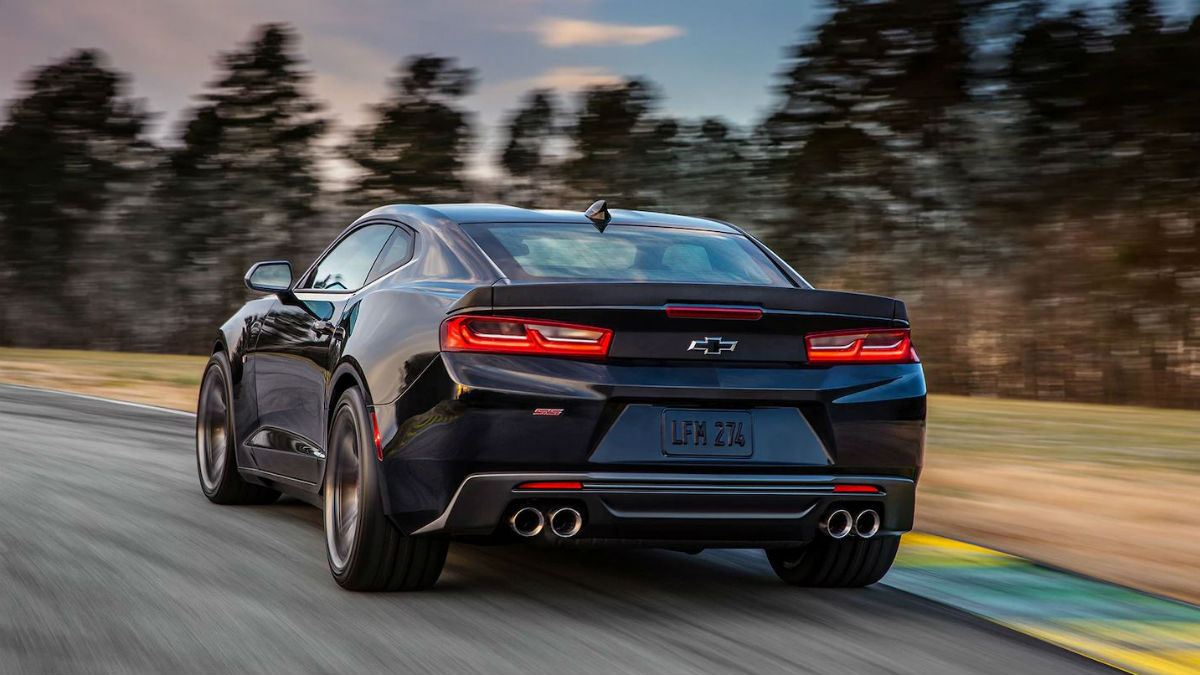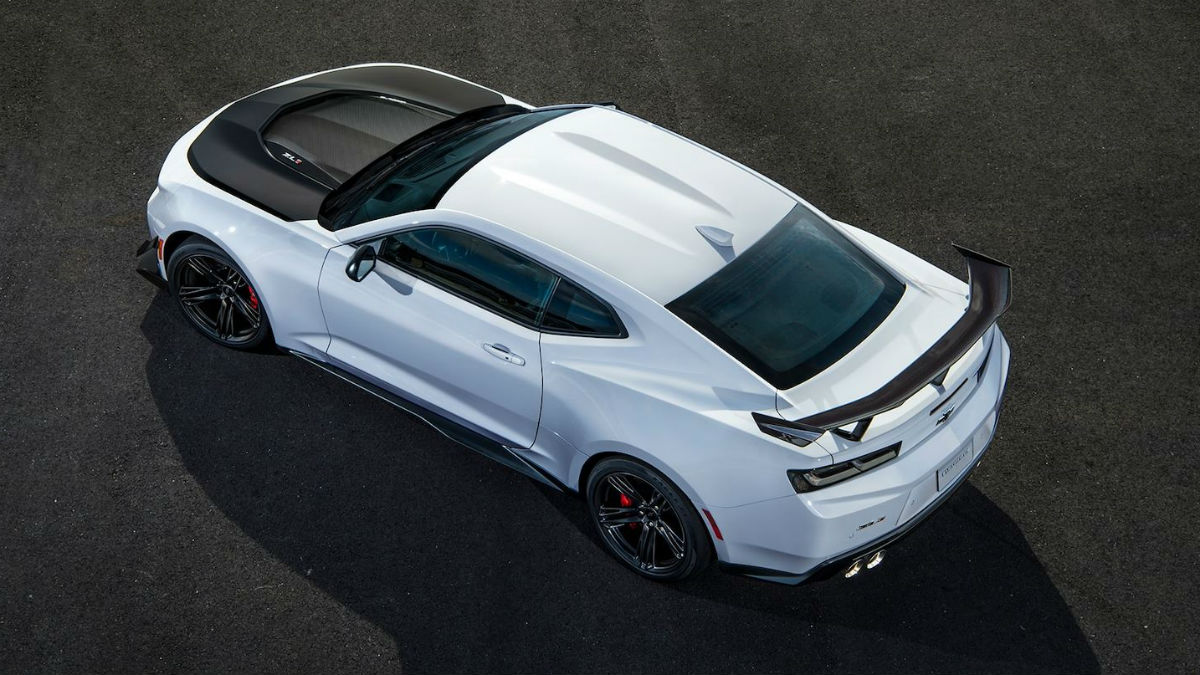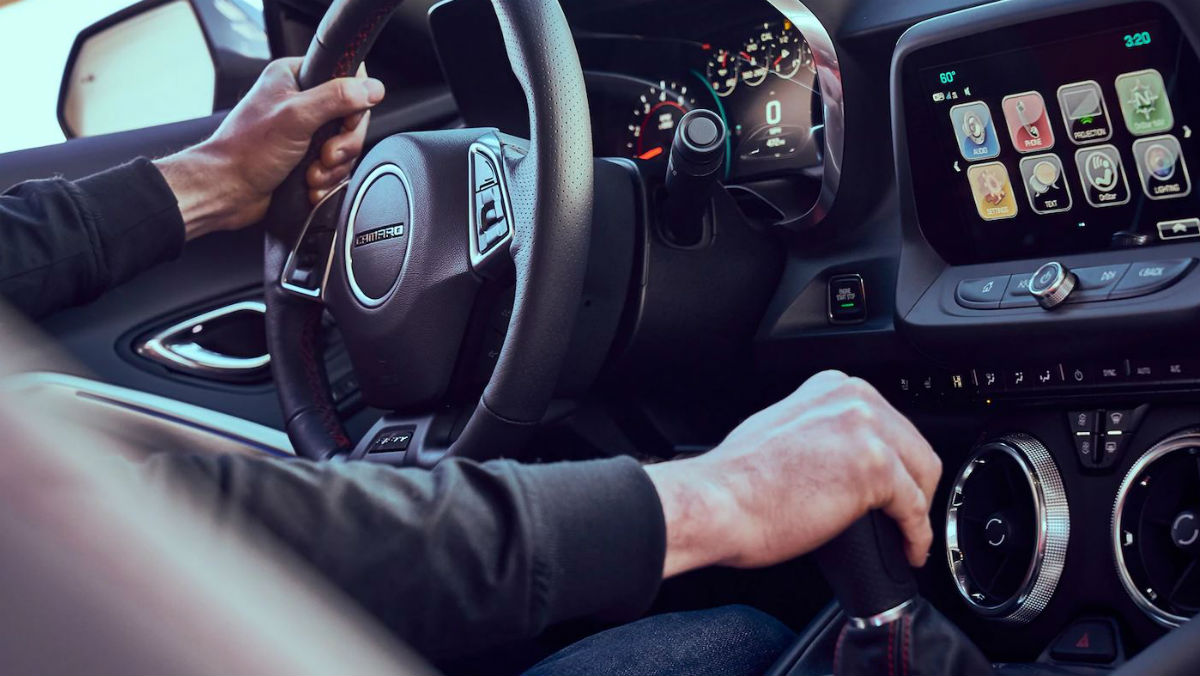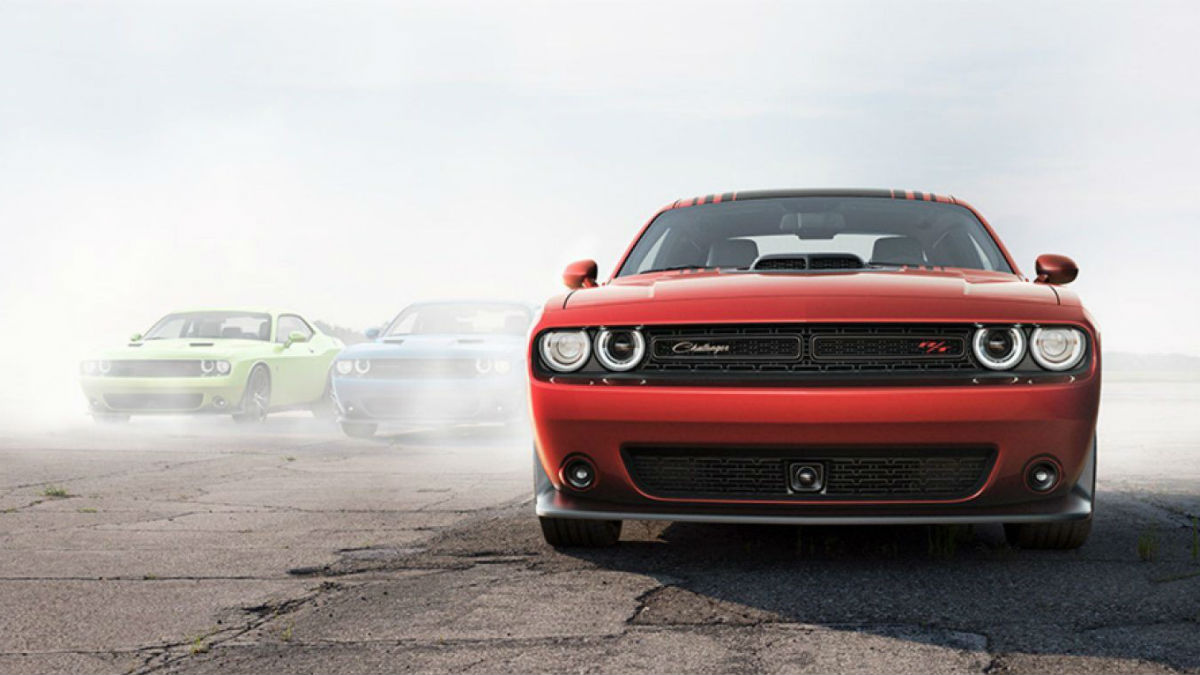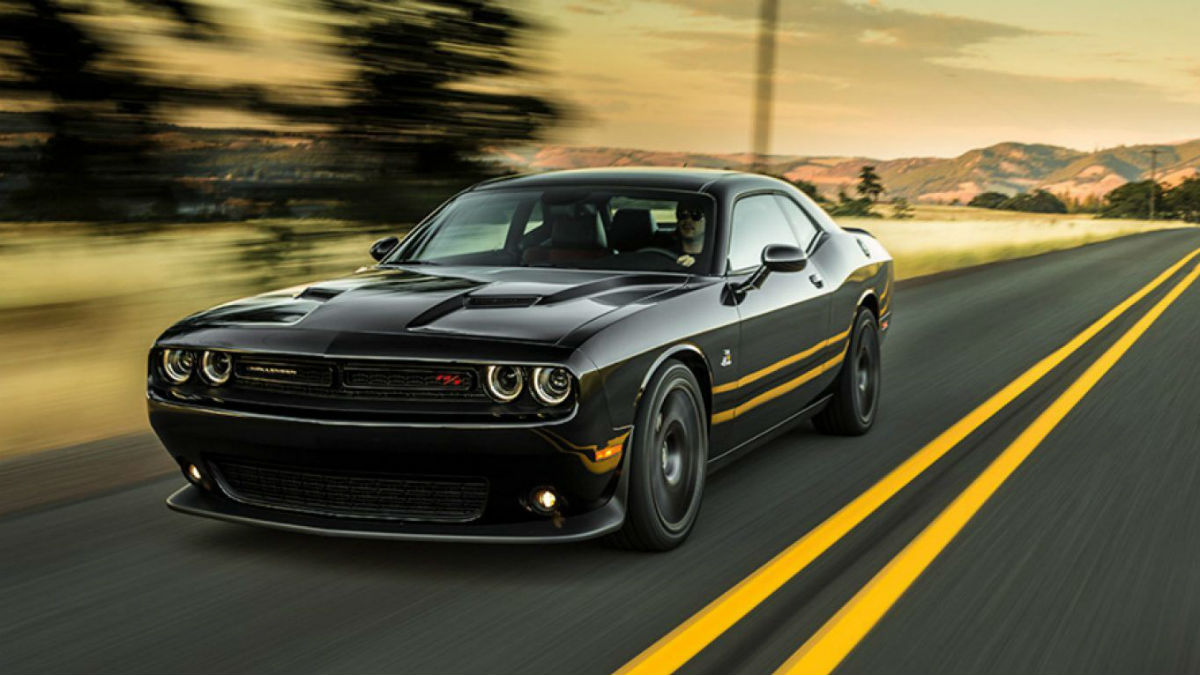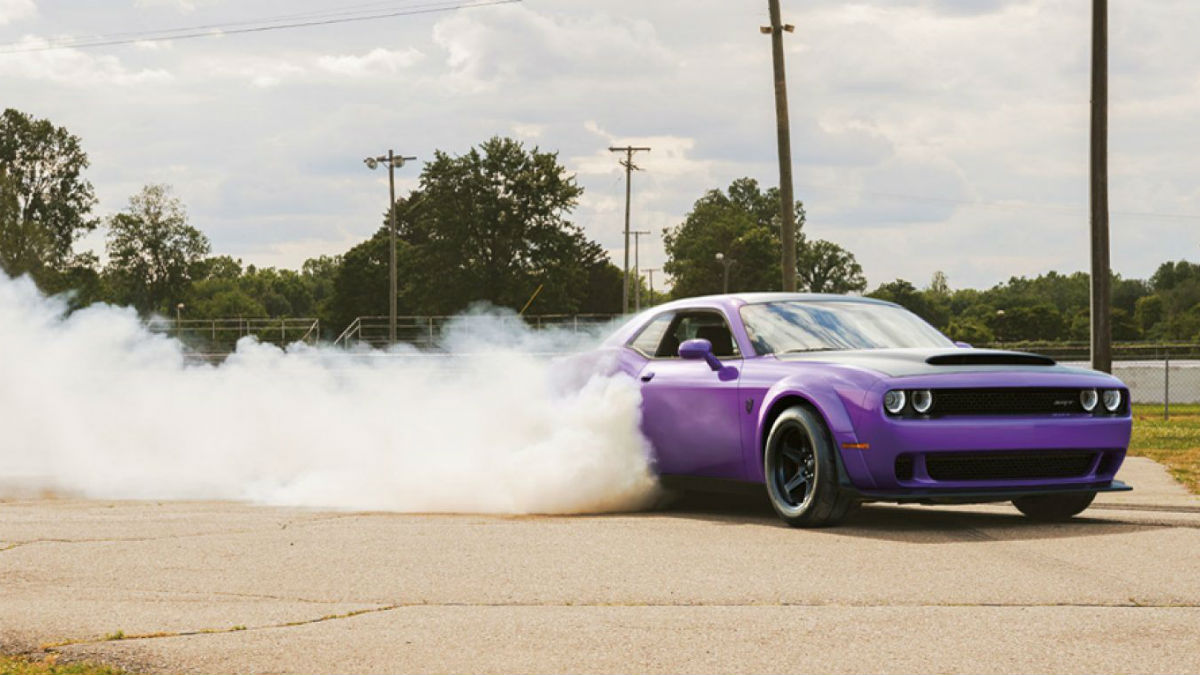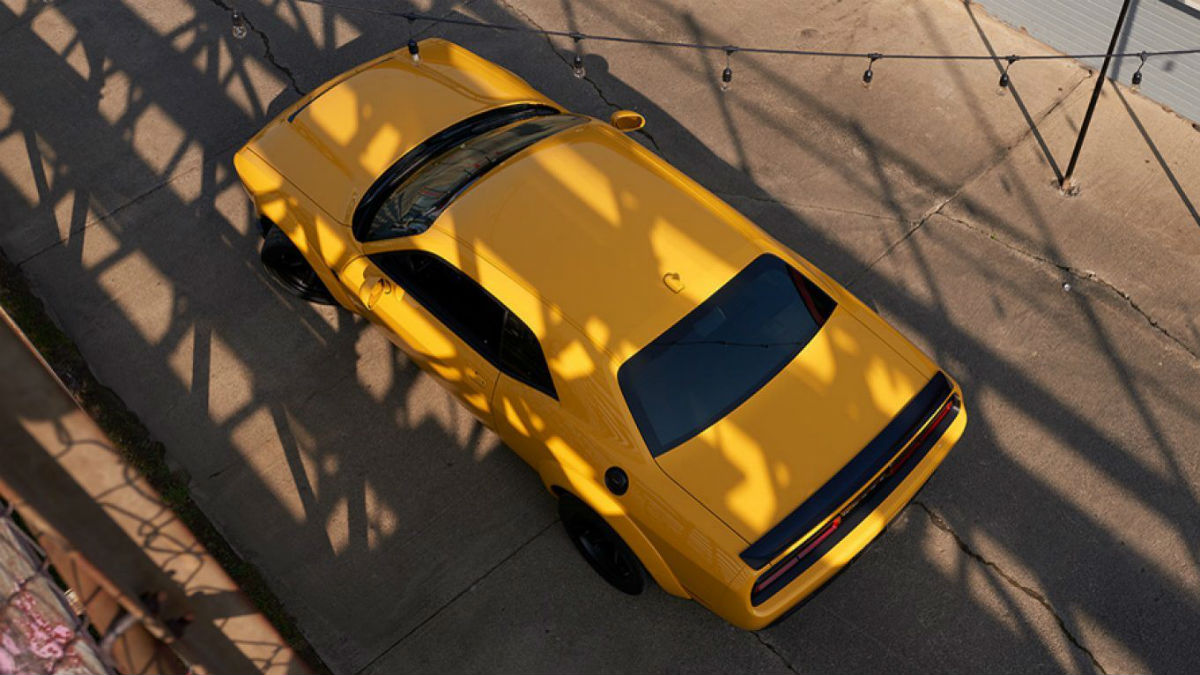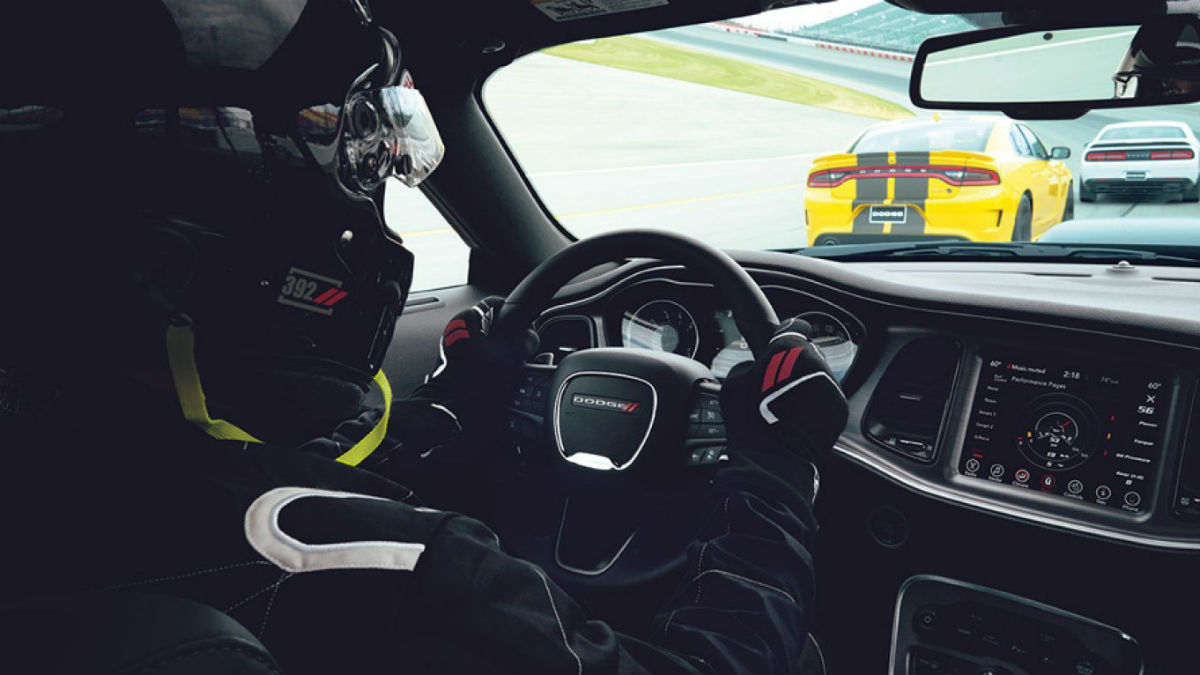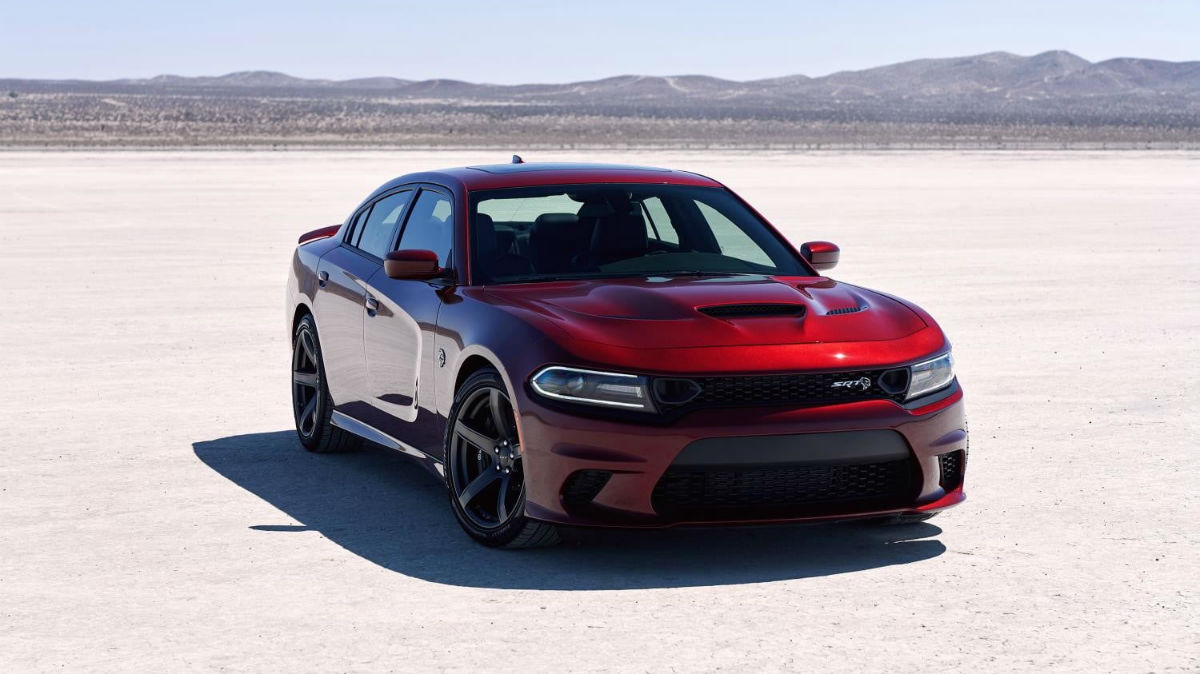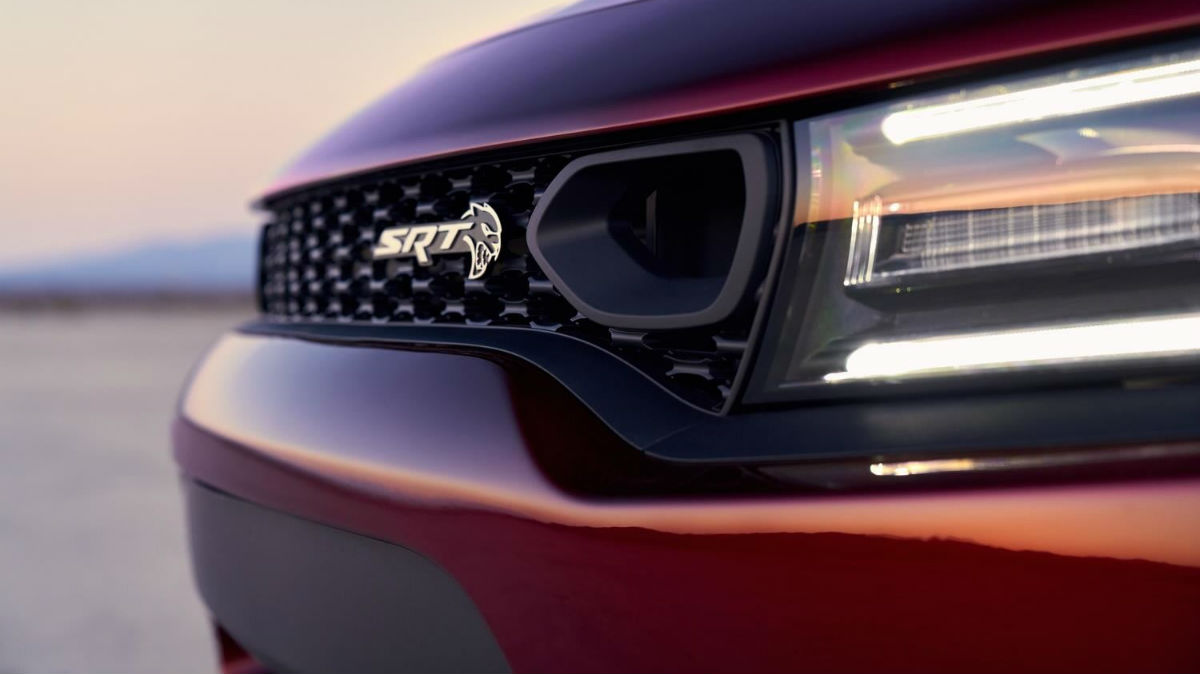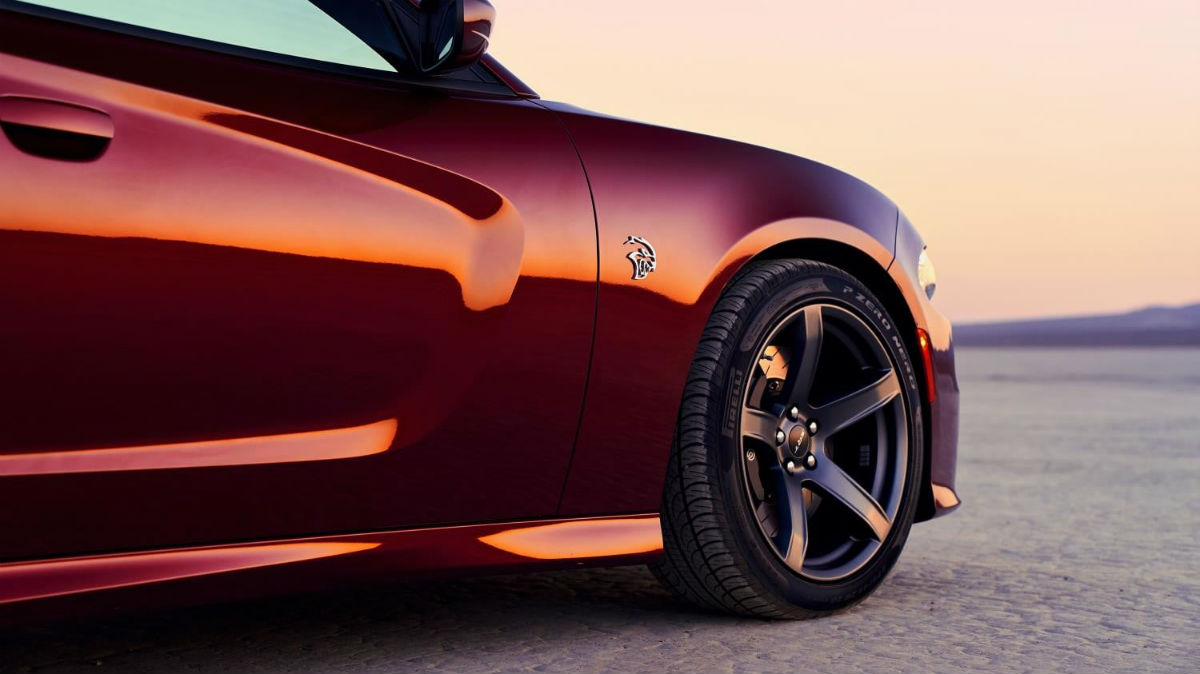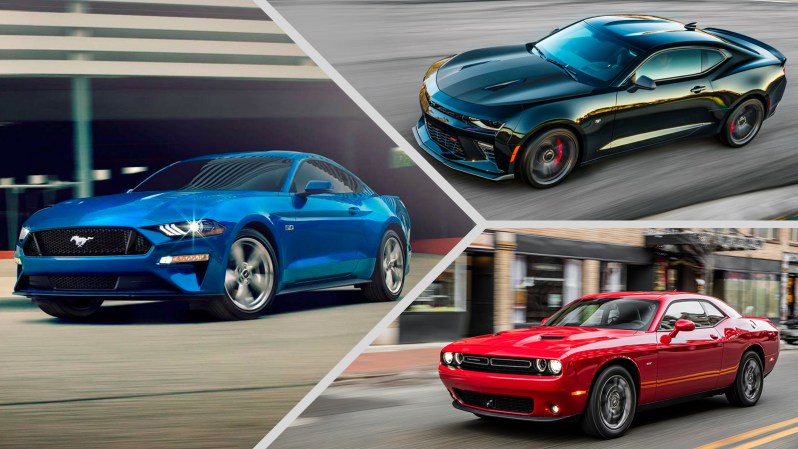
Since the mid-1960s, Americans have associated muscle cars with the very essence of our great nation. Loud, proud, and powerful, these performance vehicles are unlike any other class of car.
In some ways, the muscle car is precisely the same as it’s always been: rear-wheel-drive, front-engine, and styled for impact. However, the type and degree of performance available from these machines is vastly different than ancestral vehicles. Muscle cars are as fast around corners as they are in a straight line, some make more power than contemporary supercars, and four-cylinder turbocharged versions are even fuel-efficient.
With each passing year, the three muscle car kings — Chevrolet Camaro, Ford Mustang, and Dodge Challenger — grow more potent, technologically advanced, and altogether exciting. Frankly, it’s becoming hard to keep up with all the special editions and model year improvements. Alas, we’ll do our best in this modern muscle car matchup.
Ford Mustang
The original pony car is the favorite of the three in terms of sales figures. Ford sold 81,866 Mustangs to Chevy’s 67,940 Camaros and Dodge’s 64,537 Challengers in 2017. Customers are attracted to the car’s aggressive styling, frugal powertrain options, and affordable price (the 2018 Mustang’s $25,680 starting figure is the cheapest of the muscle car trio).
The Ford Mustang received a number of upgrades for the 2018 model year to keep its appeal high. An adaptive damper suspension system is available for both the GT and EcoBoost-powered models, an active exhaust system can muffle or open up the music playing from the back of the Mustang GT, power is up 25 horses and 20 pound-feet of torque on the GT, and an available 12.0-inch digital driver display is the first of its kind on a muscle car.
Three engines can be found under the hood of 2018 model year Mustangs. The entry-level cars use a 2.3-liter turbocharged four-cylinder to produce 310 horsepower and 310 lb-ft of torque. Those who prefer a classic V8-powered muscle car can choose from either the GT’s 5.0-liter Cayote unit, with 460hp and 420 lb-ft of torque, or the GT350’s 5.2-liter flat-crank engine with 526hp and 429 lb-ft of torque. Regardless of powertrain, the 2018 Ford Mustang is offered with both a six-speed manual or a 10-speed automatic transmission. The Mustang GT does 0-60 mph in 4.3 seconds and tops out at 155 mph.
This year, Ford re-introduced the Mustang Bullitt, based on the GT. Celebrating the 50th anniversary of its movie namesake, the special edition ‘Stang gets 15 extra horsepower over the standard GT, along with a higher top speed (163 mph), dark green paint job, black wheels, and tuned suspension. Next year, Mustang fans will be also be treated to a revived GT500. Rumor has it the new GT500 will pack over 700 horsepower from a supercharged V8 to better compete with the Dodge Challenger SRT Hellcat.
Chevrolet Camaro
Mustang owners wouldn’t be caught dead in a Camaro, but the same could be said for Camaro enthusiasts — these folks love their bowtie brawlers. The latest Chevy Camaro is arguably the best driver’s car of the three (at least in base form), thanks to a superb chassis and potent engines.
Starting at $25,905 for the entry-level model, the 2018 Camaro is just a hair pricier than the Mustang and has the best city mileage rating of all three cars at 22 mpg. Little has changed for the 2018 model year, but 2017 saw several new trims and features including 50th anniversary and Redline special editions, the return of the 1LE performance package for V6 and V8 models, and the addition of Chevy’s Teen Driver monitoring software across all trims.
The 2018 Chevy Camaro is available with three powertrains and four configurations: the 2.0-liter turbocharged four-cylinder produces 275hp and 295 lb-ft of torque, the 3.6-liter V6 makes 335hp and 284 lb-ft of torque, the 6.2-liter naturally aspirated V8 delivers either 455hp and 455 lb-ft of torque in the SS, or 650hp and 650 lb-ft of torque in the supercharged ZL1. Transmission options include a six-speed manual, eight-speed automatic, or new ten-speed auto. The Camaro SS does 0-60 mph in 4.1 seconds and tops out at 165 mph.
In 2019, Chevrolet’s face-lifted Camaro will go on sale with no other changes than a revised infotainment system. The restyled car is already drawing both love and hate from sports car enthusiasts for its non-traditional front-end, but we anticipate most nay-sayers will adjust to the new look before long.
Dodge Challenger
Rather than striving for the cutting edge, Dodge takes a nostalgic approach to its Challenger nameplate. With an old-school look; comfortable, spacious interior; and brutal power, the current Challenger bullies its way through traffic better than most pickup trucks.
Priced from $27,295 for the V6-powered SXT, the Challenger is the most expensive and best-equipped muscle car. In 2017, Dodge gave the Challenger a light exterior refresh of its headlights, taillights, and bumpers. The T/A and T/A 392 nameplates were also revived with improved grip, braking, and engine-cooling compared to the standard models. Chrysler’s updated UConnect infotainment system made its way into every Challenger, with an 8.4-inch display available. This year, changes include an optional handling package, an available all-wheel-drive system, and a widebody kit for the Hellcat.
The Dodge Challenger has the broadest powertrain selection and output selection. A 3.6-liter Pentastar V6 slots into entry-level models to the tune of 305hp and 268 lb-ft of torque. R/T models add two cylinders, with their 5.7-liter mills churning out 372hp and 400 lb-ft of torque. A retro “Shaker” edition is tuned to 375hp and 410 lb-ft of torque. Raising the intensity are 6.4-liter V8-powered models (SRT 392, Scat Pack, T/A) with 485hp and 475 lb-ft of torque.
On a completely different level, the Challenger SRT Hellcat drops 707hp and 650 lb-ft of torque. Already sold out, the Demon flattens its muscle car competitors with 840hp (on 95 octane fuel) and 717 lb-ft of torque. Depending on trim level, a six-speed manual or eight-speed automatic are available. The 2018 Dodge Challenger SRT 392 does 0-60 mph in 4.2 seconds and tops out at 182 mph.
Next year, Challenger lovers will have access to a new Hellcat halo model: the Red Eye. Slotting above the more-powerful 717hp Hellcat, the Red Eye will deliver 797 horses to the rear wheels. In addition to a better lubrication system, the Red Eye gets a dual-snorkel grille and 20-inch lightweight wheels. Dodge will also offer the wide body set up for 392 Scat Pack models.
